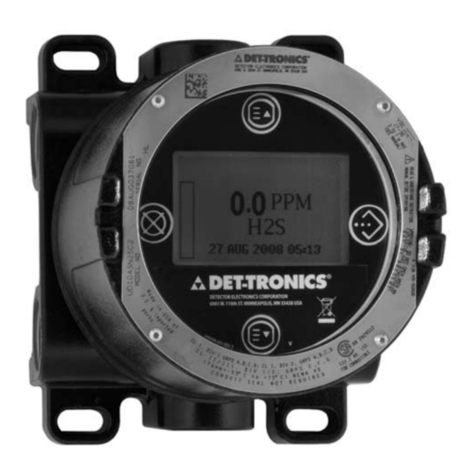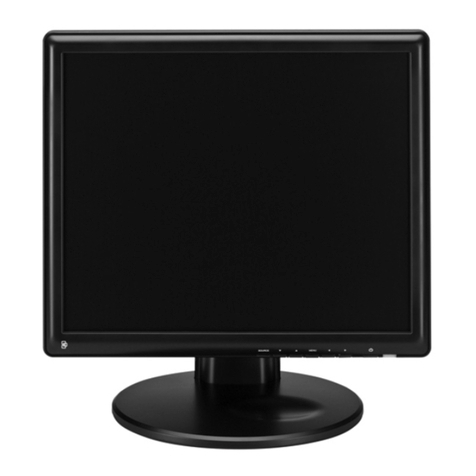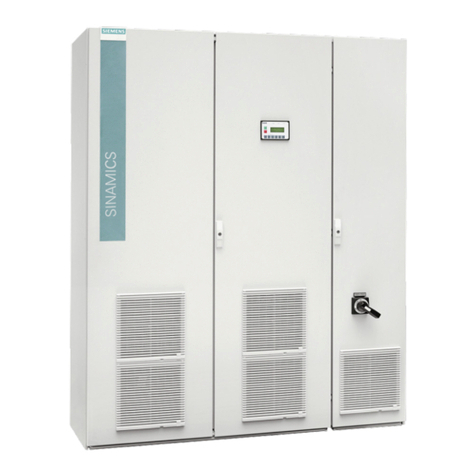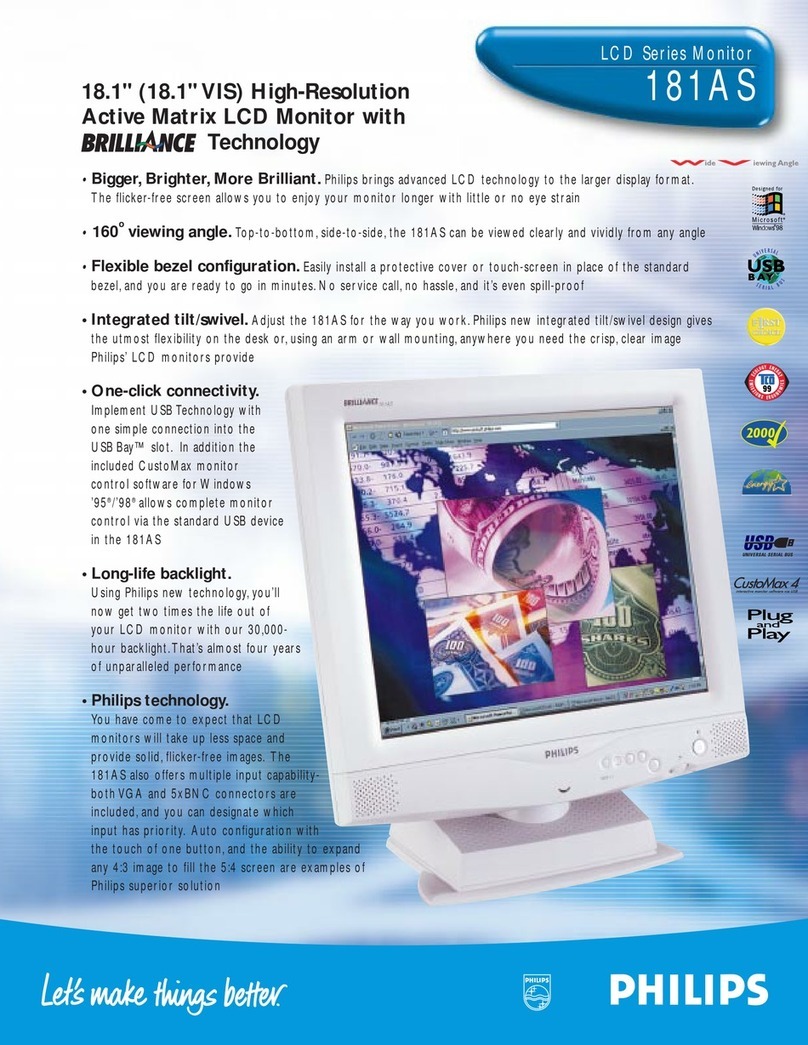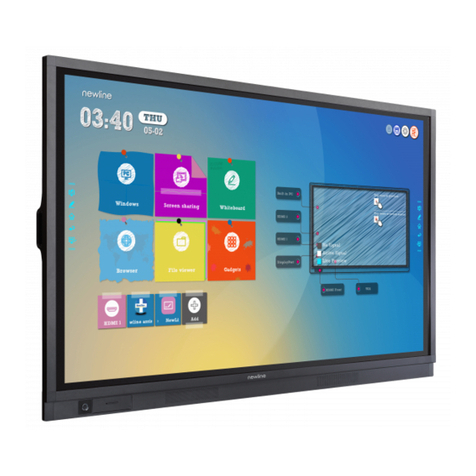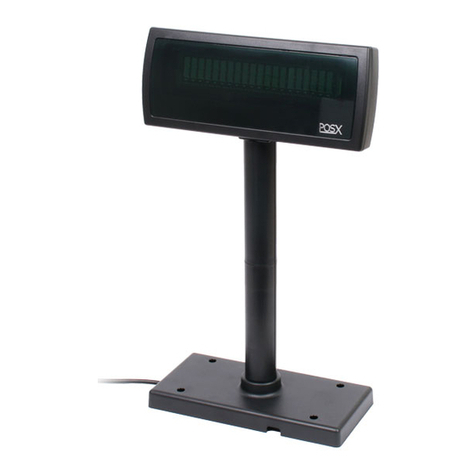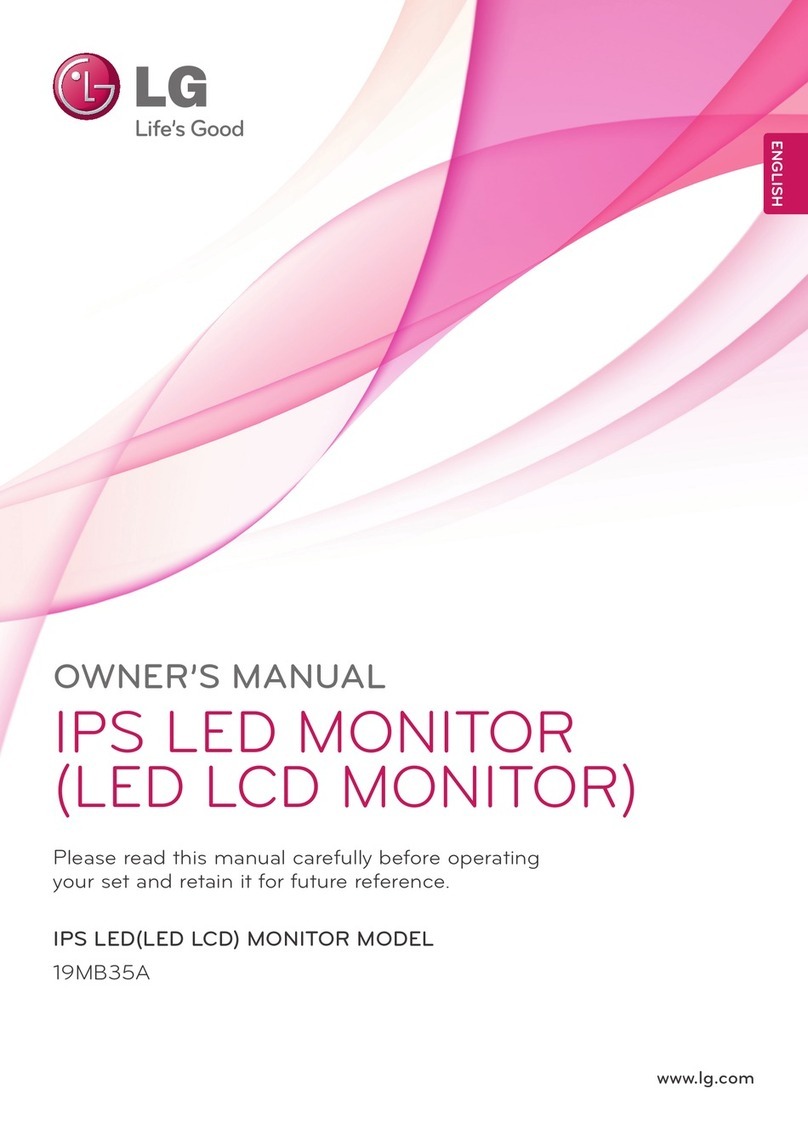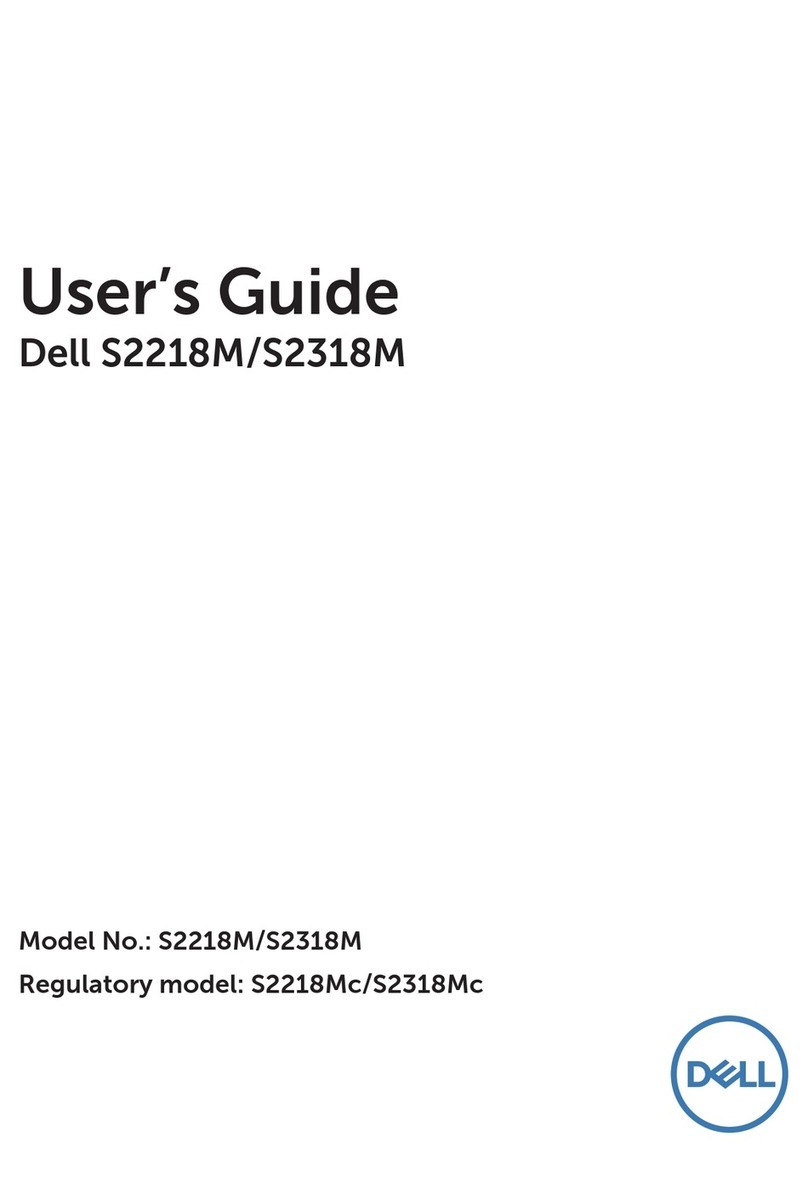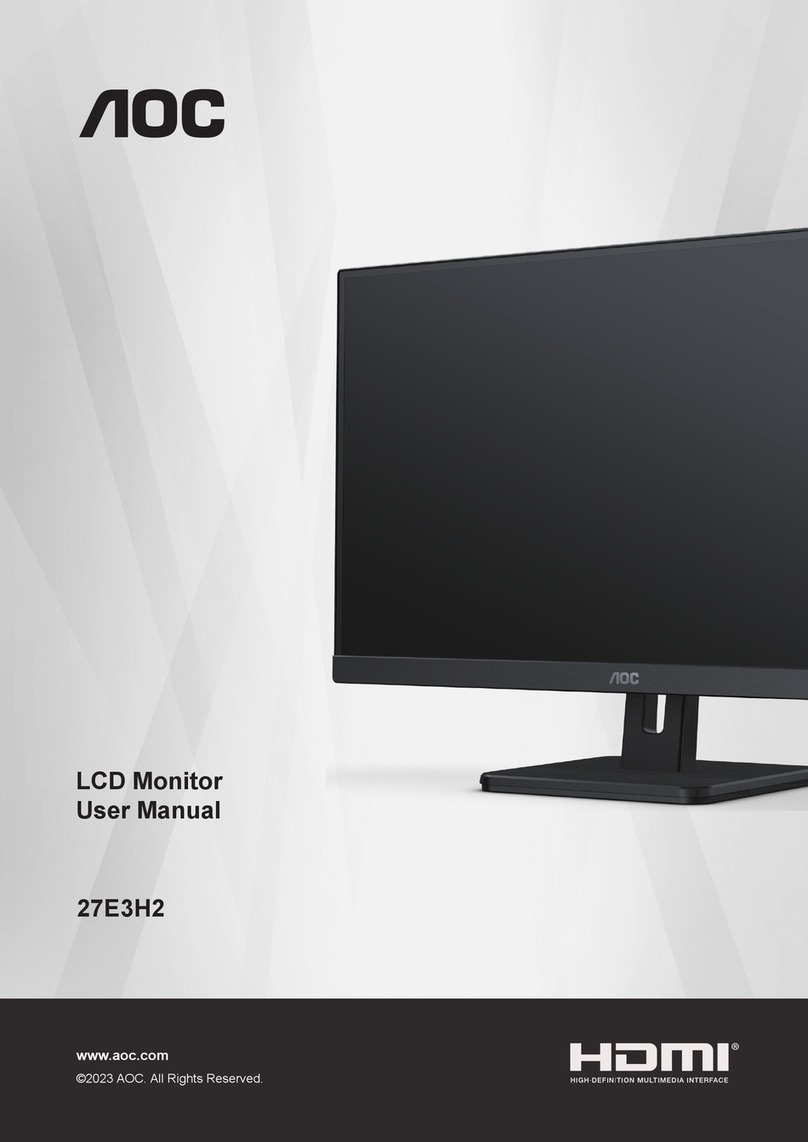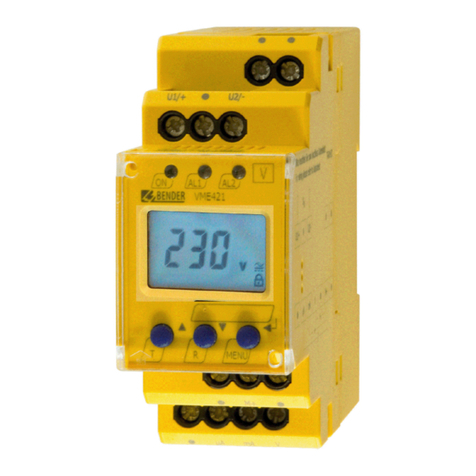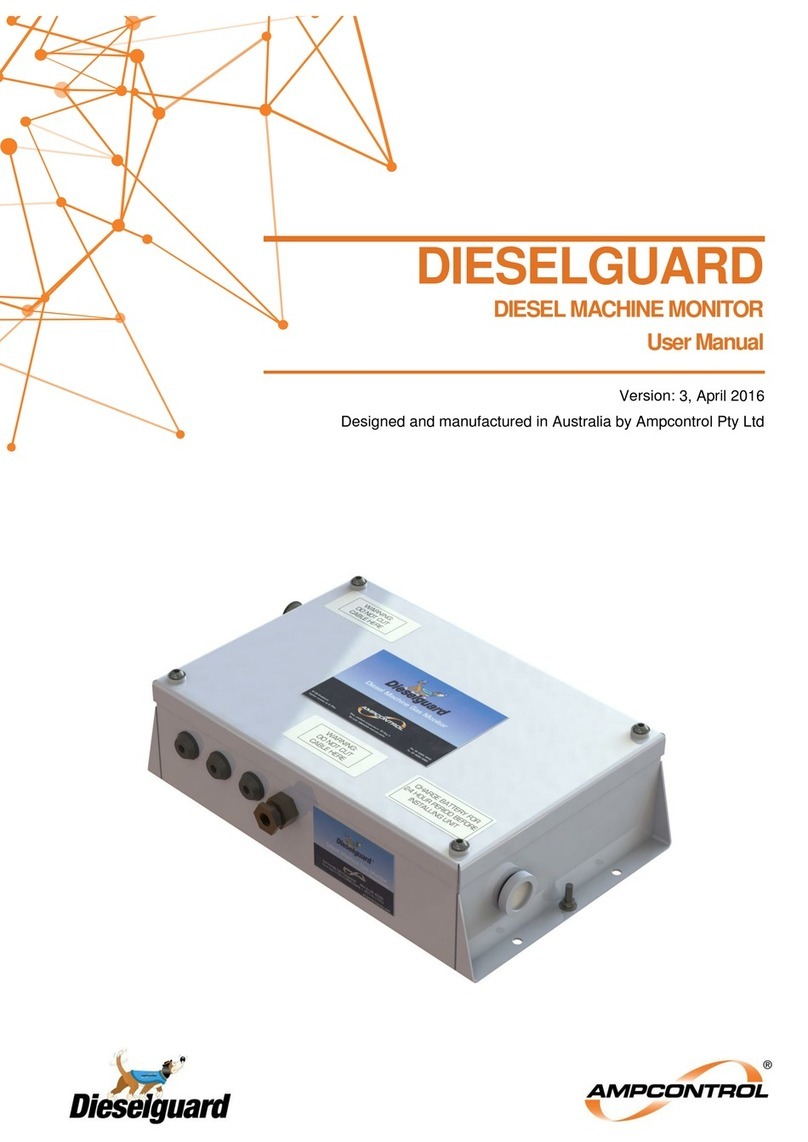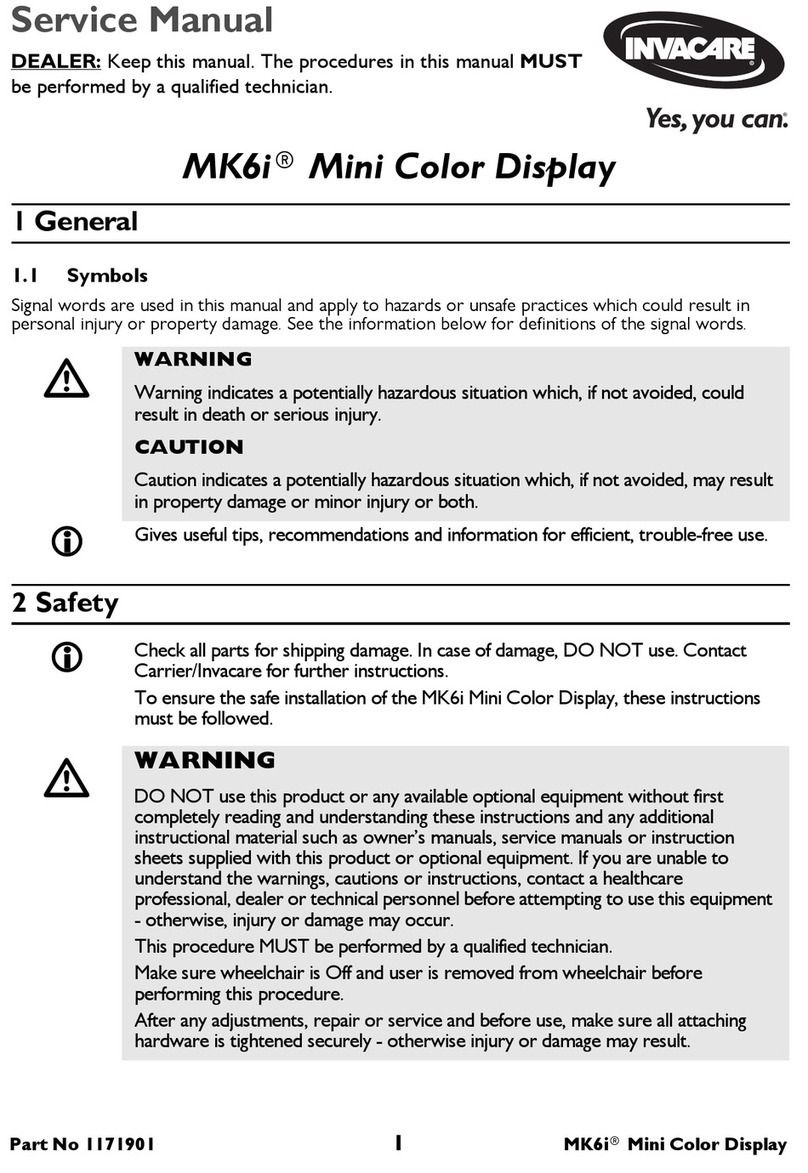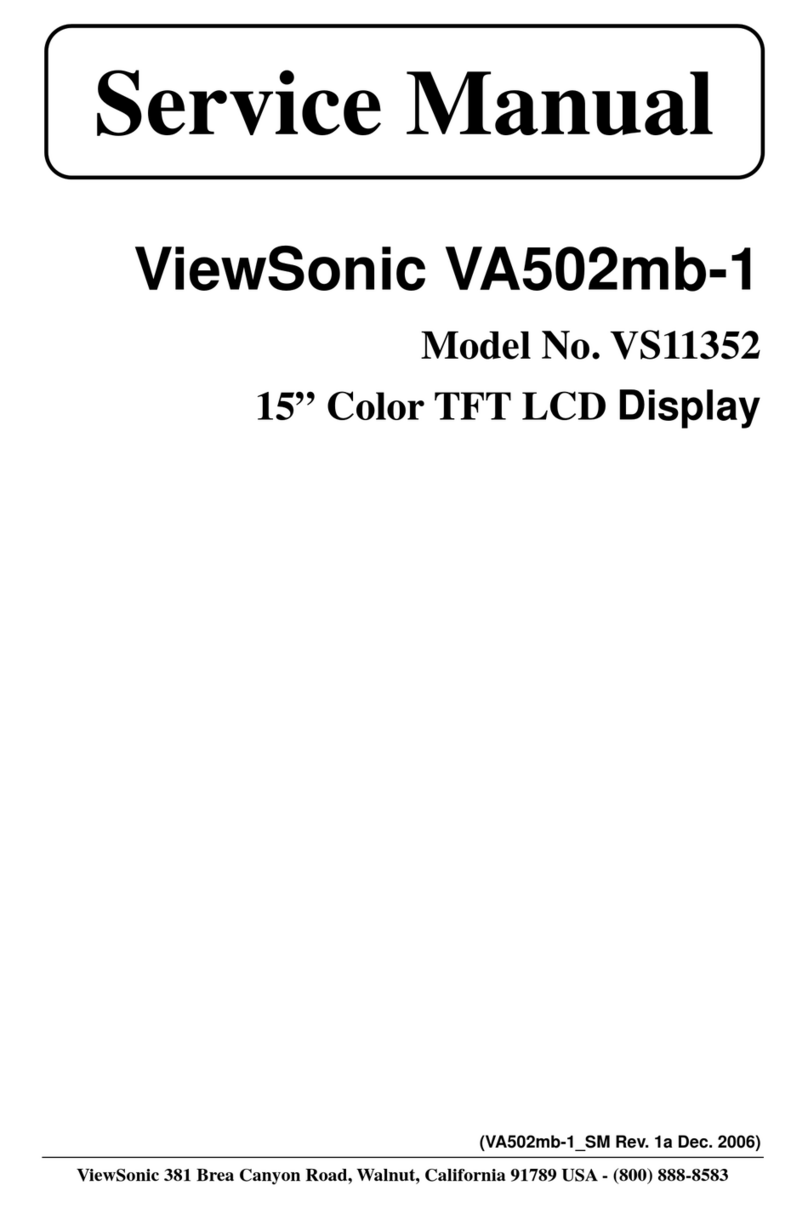UTC Fire and Security DET-TRONICS 95-8522 User manual

Instructions 95-8522
Volumetric IR Process Gas Monitor
PIRVOL Series
4.1 7/07 95-8522

Table Of Contents
APPLICATION.............................................1
FEATURES...............................................1
SPECIFICATIONS..........................................1
DESCRIPTION ............................................4
DetectionMethod.......................................4
CurrentLoopOutput.....................................4
SignalDisplayDevice....................................5
OperatingModes .......................................5
INSTALLATION............................................6
Device Mounting Orientation . . . . . . . . . . . . . . . . . . . . . . . . . . . . . . 6
JunctionBoxes.........................................6
General Wiring Requirements . . . . . . . . . . . . . . . . . . . . . . . . . . . . . 6
WiringProcedure .......................................7
Detector Separation (Optional) . . . . . . . . . . . . . . . . . . . . . . . . . . . . . 8
STARTUPPROCEDURE ....................................9
TROUBLESHOOTING. . . . . . . . . . . . . . . . . . . . . . . . . . . . . . . . . . . . . . . 9
MAINTENANCE ...........................................9
Disassembly and Cleaning Procedure . . . . . . . . . . . . . . . . . . . . . . 10
Calibration............................................11
DEVICEREPAIRANDRETURN..............................12
ORDERINGINFORMATION.................................13

4.1
INSTRUCTIONS
Volumetric IR Process Gas Monitor
PIRVOL Series
APPLICATION
PIRVOL Infrared Process Gas Monitors provide
continuous measurement of hydrocarbon vapors in the
range of 0 to 90% by volume. The PIRVOL-LT model
provides an analog 4 to 20 milliampere signal output
that is proportional to methane vapor concentrations
from 0 to 90% by volume, while the PIRVOL-VR model
provides an analog 4 to 20 milliampere signal that is
proportional to propane from 0 to 90% by volume.
All PIRVOLs are designed for use in extractive vapor
sampling systems where the vapor concentration is
likely to be above the lower flammability limit (LFL).
Typical applications for PIRVOL-LT include natural
gas and oil well mudlogging, or coalbed methane
collection systems. In both cases, methane-laden
vapor samples are extracted from a tank or process
area and analyzed by PIRVOL-LT to determine the
methane concentration level. Typical applications
for the PIRVOL-VR include gasoline transfer vapor
recovery systems, where the vapor recovery processor
or vent is monitored for efficient vapor recovery and
control.
All PIRVOL models are CSA certified for use in Class
I, Division 1, Groups B, C and D; and Class I, Division
2, Groups A, B, C and D areas. They are fitted with a
sealed sampling cup with compression-type 0.25 inch
o.d. tubing fittings for easy integration into a vapor
sample extraction system.
FEATURES
• Routine calibration not required.
• Continuous self-test automatically indicates a fault or
fouled optics condition.
• Performs well in the presence of high concentrations
or constant background levels of hydrocarbons and
in oxygen depleted atmospheres.
• There are no known poisons, e.g. silicones or
hydrides, that compromise the integrity of the
measurement.
SPECIFICATIONS
INPUT VOLTAGE—
24 vdc nominal. Operating range is 18 to 32 vdc
including ripple.
POWER CONSUMPTION (Watts)—
Input Voltage: 18 vdc 24 vdc 32 vdc
Nominal 3.5 4.6 6.2
Maximum 4.0 5.5 7.0
DETECTION RANGE—
PIRVOL-LT: 0 to 90% by volume methane.
PIRVOL-VR: 0 to 90% by volume propane.
DETECTABLE GASES—
PIRVOL-LT is intended for methane monitoring only,
PIRVOL-VR for propane only. PIRVOL responds
to most hydrocarbon gases, however, the signal
processing program is only accurate for the target
gas.
CURRENT OUTPUT—
Linear 4 to 23 ma current source (non-isolated).
Output levels below 2.4 ma indicate calibration, fault
and fouled optics conditions.
4.1 ©Detector Electronics Corporation 2007 7/07 95-8522

4.1
To convert PIRVOL milliampere output to % by volume
gas concentration, use the following formula:
(milliamp signal – 4.0) x 5.625 = % by volume propane
Example:
(4.0 – 4.0) x 5.625 = 0%
(12.0 – 4.0) x 5.625 = 45% by volume
(20.0 – 4.0) x 5.625 = 90% by volume.
Refer to Table 1 for a detailed description of current
outputs.
Maximum loop resistance: 580 ohms at +24 vdc. See
Figure 1 for further information.
PIRVOL-LT CROSS SENSITIVITY—
PIRVOL-LT provides a linear analog 4 to 20 mA signal
output in response to methane vapor concentration
of 0 to 90% by volume. The presence of other
hydrocarbon vapors in the sample stream will cause
an increased signal output from the PIRVOL-LT. The
tables below show the device output in response
to other hydrocarbon vapors. All device readings
are listed in % volume indicated, and all tests were
performed with a methane calibrated PIRVOL-LT.
2 95-8522
Figure 1—4 to 20 ma Current Loop Resistance
Table 1—Current Loop Output Levels
and Corresponding Status Indications
Current Level Status
23.0 ma 100% by volume
20.0 ma 90% by volume
4.0 ma Zero gas level (0% by volume)
2.2 ma Zero calibration in progress
2.0 ma Span calibration in progress
1.8 ma Calibration complete - remove gas
1.6 ma Calibration fault
1.0 ma Fouled optics
0.8 ma 24 vdc line low (less than 17.5 vdc)
0.6 ma Calibrate input active at power-up
(probable wiring fault)
0.4 ma Active channel fault
0.2 ma Reference channel fault
0.0 ma CPU system fault, warmup
Ethane
% Gas Reading
0% 0
20% 24
40% 53
60% 85
80% 115
100% >120
Cross Sensitivity of PIRVOL-LT to Ethane
Cross Sensitivity of PIRVOL-LT to Propane
Propane
% Gas Reading
0% 0
20% 3
40% 6
60% 9
80% 13
100% 18
Cross Sensitivity of PIRVOL-LT to Butane
Butane
% Gas Reading
0% 0
20% 8
40% 20
60% 38
80% 66
100% 102
C1964
18 20 22 24
POWER SUPPLY VOLTAGE (VDC)
26 28 30 32
MAXIMUM LOOP RESISTANCE (OHMS)
400
500
600
700
800
900
LOOP RESISTANCE (OHMS)

4.1
WIRING—
The PIRVOL has five 22 AWG wires, 20 inches (50
cm) long.
Red = + 24 volts dc
Black = – (common)
White = 4 to 20 milliampere signal output
Yellow = Calibration input
Green = Chassis ground
Power Wiring: 18 AWG minimum is recommended for
power wiring. Larger diameter wire may be required
to maintain a minimum of 18 vdc (including ripple) at
the sensor for all operating conditions (see Figure 2).
For maximum EMI/RFI protection, shielded cable is
recommended.
TEMPERATURE RANGE—
Operating: –40°F to +167°F (–40°C to +75°C).
Storage: -40°F to +185°F (–40°C to +85°C).
HUMIDITY (non-condensing)—
0 to 99% relative humidity (Det-Tronics verified)
5 to 95% relative humidity (CSA verified).
RFI/EMI PROTECTION—
EN50081-1. Class B, EN50082-1 (IEC 801-2, 3, 4).
Operates properly with 5 watt walkie talkie keyed at 1
meter.
ENCLOSURE MATERIALS—
Copper-free aluminum (clear anodized) enclosure.
Stainless Steel (316 electropolished) enclosure.
SAMPLE DRAW CUP—
Material: Aluminum.
Fittings: Brass.
Tubing Size: 1/4 inch O.D.
MOUNTING—
Det-Tronics junction box, available in a tall cover (with
window) or a short cover version, is recommended
for optimum ease of installation. PIRVOL can be
threaded into any approved junction box suitable for
the specific application. Junction box thread options:
• 3/4 inch NPT
• M20.
3 95-8522
Figure 2—PIRVOL Wiring Requirements
Cross Sensitivity of PIRVOL-LT to Propylene
Propylene
% Gas Reading
0% 0
20% >120
40% >120
60% >120
80% >120
100% >120
Cross Sensitivity of PIRVOL-LT to Ethylene
Ethylene
% Gas Reading
0% 0
20% 113
40% >120
60% >120
80% >120
100% >120
C1962
18 20 22 24
POWER SUPPLY VOLTAGE (VDC)
26 28 30 32
MAXIMUM DISTANCE FROM POWER SUPPLY TO POINTWATCH IN FEET
16 AWG14 AWG12 AWG 18 AWG
500
1000
1500
2000
2500
0

4.1
JUNCTION BOX TERMINALS—
PIRVOL junction box terminals UL/CSA rated for 14 to
22 AWG wire; terminals DIN/VDE rated for 2.5 mm2
wire.
CERTIFICATION—
CSA: Class I, Division 1, Groups B, C and D;
Class I, Division 2, Groups A, B, C
and D (T3C).
DIMENSIONS—
See Figure 3 for dimensions of the PIRVOL and Figure
4 for dimensions of the PIRVOL Junction Box.
SHIPPING WEIGHT (Approximate)—
Aluminum: 1.9 pounds (0.9 kilogram).
Stainless Steel: 5.0 pounds (2.3 kilograms).
DESCRIPTION
DETECTION METHOD
PIRVOL operates on the infrared absorption
principle. A beam of modulated light is projected
from an internal infrared source to a reflector, which
sends it back to a pair of infrared sensors. One of
the sensors is designated reference and the other
active, with different optical filters in front of the two
sensors to make them selective to different infrared
wavelengths. The reference wavelength is unaffected
by combustible gases, while the active wavelength
is absorbed by combustible gases. The ratio of the
active to the reference wavelength is computed within
the PIRVOL to determine the concentration of gas
present. This value is then converted into a 4 to 20
milliampere current output for connection to external
display and control systems.
CURRENT LOOP OUTPUT
During normal operation, the PIRVOL has a 4 to 20
milliampere current output that is proportional to gas
concentrations from 0 to 90% by volume methane. A
current output less than 4 milliamperes indicates a
fault condition (see Table 1).
4 95-8522
6.1 (154)
4.6
(116)
2.75
(70)
3.2 (78) 5.8 (147)
B2029
Figure 3—PIRVOL Dimensions in Inches (mm)

4.1 5 95-8522
SIGNAL DISPLAY DEVICE
If a local or remote digital display for indication
of detected gas concentration is required, it is
recommended to utilize a scalable display device
with a clearly marked unit of measurement in % by
volume. Under no circumstances should a %LFL unit
of measure display module be used to display the
PIRVOL signal output.
OPERATING MODES
Warmup
When power is applied to the PIRVOL, it enters a
Warmup mode (for approximately one minute) in which
it performs diagnostic checks and allows the sensors
to stabilize before beginning normal operation. The
current output during this period is 0 milliamperes. At
the end of the warmup period with no faults present,
the PIRVOL automatically enters the Normal operating
mode. If a fault is present after the warmup, the
current output will indicate a fault.
Figure 4—Junction Box Dimensions in Inches (mm)
3.46
(8.8)
4.7
(11.9)
2.7
(6.9)
5.2
(13.2)
5.86
(14.9)
6.57
(16.7)
1.28
(3.3)
A230
7
3.77
(9.6)
1.28
(3.3)
3.46
(8.8)
4.7
(11.9)
2.7
(6.9)
5.2
(13.2)
5.86
(14.9)
B2281

4.1 6 95-8522
Normal
In the normal operating mode, the 4 to 20 milliampere
signal level corresponds to the detected gas
concentration. The PIRVOL continuously checks
for system faults or initiation of calibration, and
automatically changes to the appropriate mode.
Fault
Faults detected during warmup, normal operation, or
calibration are indicated by the current loop output as
shown in Table 1.
Calibration
The PIRVOL-LT is calibrated at the factory for
detection of methane. PIRVOL-VR is calibrated for
propane. No field calibration is required under normal
circumstances.
In the event the PIRVOL optics are fouled and
complete optics disassembly for cleaning is required,
device re-zeroing may be required after re-assembly.
Refer to the “Calibration” section for details.
NOTE
A momentary connection of the calibration lead
wire to DC negative (common) of the power
supply initiates the zero and span calibration
sequence. When wiring the PIRVOL, use care
to isolate it from accidental contact with the
junction box and/or other conductors.
INSTALLATION
DEVICE MOUNTING ORIENTATION
It is highly recommended that the PIRVOL be installed
in the horizontal position. See Figure 5.
JUNCTION BOXES
The PIRVOL is designed to be threaded into a junction
box, which is then mounted to a solid, vibration-free
wall or post.
Det-Tronics offers two junction box styles for use
specifically with the PIRVOL:
• Tall Cover Model (junction box cover includes a
window). See Figure 6.
• Short Cover Model (junction box uses solid cover).
This junction box can also be used for detector
separation. See Figure 7.
GENERAL WIRING REQUIREMENTS
NOTE
The wiring procedures in this manual are
intended to ensure proper functioning of the
device under normal conditions. However,
because of the many variations in wiring
codes and regulations, total compliance to
these ordinances cannot be guaranteed. Be
certain that all wiring complies with applicable
regulations relating to the installation of electrical
equipment in a hazardous area. If in doubt,
consult the authority having jurisdiction before
wiring the system.
The use of shielded cable in conduit or shielded
armored cable is recommended for optimum RFI/EMI
protection. In applications where the wiring cable
is installed in conduit, the conduit must not be used
for wiring to other electrical equipment. To assure
proper operation, the resistance of the connecting
wire must be within the specified limits. The maximum
distance between the PIRVOL and power source is
determined by the power supply capability and wire
size. See Figure 2 to determine the proper wire size
and maximum wiring distance allowed.
It is important that moisture not be allowed to come in
contact with the electrical connections of the system.
The use of proper piping techniques, breathers,
glands, and seals are required to prevent water
ingress and/or maintain the explosion-proof rating.
CORRECT INCORRECT
Figure 5—Recommended Orientation of PIRVOL Detector

4.1
WIRING PROCEDURE
IMPORTANT
Do not apply power until the wiring procedure is
complete and has been verified.
1. Locate the sensor where it will be accessible for
maintenance. Excessive heat or vibration can
result in premature failure of any electronic device
and should be avoided if possible.
2. The junction box should be electrically connected
to earth ground.
3. Figure 8 shows typical wiring for stand alone
operation. Figure 9 shows typical wiring for
PIRVOL with Det-Tronics supplied junction box.
Figure 10 shows the wiring terminals located
inside the junction box. The PIRVOL wiring color
code is:
Red lead = +24 volts dc
Black lead = – (common)
White lead = 4 to 20 ma signal output
Yellow lead* = Calibration input
Green lead = Chassis ground
* If the calibration wire (yellow lead) is not
being used, do not connect this wire to
ground. Trim excess length and insulate wire
so no shorting can occur.
7 95-8522
Figure 6—Tall PIRVOL Junction Box with Window
Figure 7—Short PIRVOL Junction Box
Figure 9—Typical PIRVOL Wiring,
with Det-Tronics Junction Box
DET-TRONICS JUNCTION BOX
B1756
PIRVOL
DETECTOR
GREEN
YELLOW
WHITE
BLACK
RED
SPARE
CAL
4 – 20
RET
+24
CHASSIS
CAL
4 – 20
RET
+24
+24 Vdc
4-20 mA IN
–
+
Figure 8—Typical PIRVOL Wiring, Stand Alone Configuration
–
RED
BLACK
WHITE
YELLOW
GREEN
4 TO 20 MILLIAMPERES
PIRVOL
+
A2031
NOTES: CALIBRATION PUSHBUTTON, CURRENT METER
AND POWER SUPPLY ARE NOT SUPPLIED.
CALIBRATE SWITCH SHOWN INSTALLED, HOWEVER,
FIELD CALIBRATION IS NOT REQUIRED UNDER
NORMAL CIRCUMSTANCES.
+24 VDC
POWER SUPPLY
–
+
CALIBRATE

4.1 8 95-8522
DETECTOR SEPARATION (OPTIONAL)
In applications where the PIRVOL must be installed
in a different location from a control device (such as
a transmitter), a junction box must be installed at the
PIRVOL location to make the electrical connection.
Refer to Figure 11 for a typical separation diagram.
Wiring Requirements for Detector Separation
Shielded four wire cable is recommended for
connecting the PIRVOL junction box to the transmitter.
Cable with a foil shield is recommended. The shield
of the cable should be open at the PIRVOL junction
box and connected to earth ground at the transmitter
junction box. Ensure that the shield wire is clipped
short and insulated with electrical tape to prevent
accidental grounding at the open end.
The maximum distance between the PIRVOL junction
box and the transmitter is limited by the resistance of
the connecting wiring, which is a function of the gauge
of the wire being used.
NOTE
It is important to maintain a minimum of +18
volts dc (including ripple) at the PIRVOL. When
determining the appropriate wire size for the
installation, refer to Figure 2. Be sure to take into
account the distance from the power supply to
the PIRVOL or to the transmitter and then to the
PIRVOL to ensure that the power requirements
are met.
Mounting and Connecting Procedure
for Detector Separation
The PIRVOL junction box can be mounted to a wall
or post, or it can be suspended by the conduit if this
does not result in excessive vibration. The junction
box should be electrically connected to earth ground.
1. Lubricate the sensor threads with low vapor
pressure silicone grease, then install the sensor
in the conduit entry of the junction box. It should
be tight to ensure an explosion-proof installation,
however, do not overtighten.
2. Connect the PIRVOL wires to the terminal strip in
the junction box.
3. Connect the cable leadwires from the transmitter
to the same terminals inside the separated
junction box. Do not ground the shield at the
junction box. Ground the sensor wire shield at the
transmitter end only.
4. Check the connections inside the junction box
and place the cover on the junction box.
5. Mount and wire the transmitter as described in the
instruction manual provided by the manufacturer.
CALIBRATE SWITCH
B2056
HOLD CALIBRATION MAGNET
AT OUTSIDE BASE OF JUNCTION
BOX AT THIS LOCATION
TO ACTIVATE CALIBRATION SWITCH
REMOTE LED
Figure 10—Junction Box Terminals and Calibration Switch
JUNCTION
BOX
SUITABLE WIRING.
MUST MEET ALL LOCAL CODES.
CONTROL DEVICE,
SUCH AS TRANSMITTER
PIRVOL
DETECTOR
B2030
Figure 11—Detector Separation

4.1
STARTUP PROCEDURE
NOTE
Caution should be exercised when applying
this and any electronic device to explosive
vapor extraction and measurement applications.
Typical hazards in these applications include
small fitting vapor leaks, resulting in dangerous
gas concentrations near or within the system
enclosure. Any spark or arc may result in a fire
or explosion in these conditions. Always inspect
all fittings for leakage before commissioning, and
always remove power from all electronic devices
before performing maintenance on the vapor
extraction system tubing, fittings, and hardware.
1. Inhibit the output loads that are actuated by the
system to prevent activation of these devices.
2. Check that the PIRVOL has been wired properly.
3. Apply power to the system and allow the PIRVOL
to operate for a minimum of 2 hours, then check
zero and verify gas response.
4. Place the system in normal operation by
reactivating the output loads.
TROUBLESHOOTING
Refer to Table 2 to isolate and correct malfunctions
with the PIRVOL.
MAINTENANCE
It is recommended to have spare IR Modules on hand
(see “Spare Parts” section). Use Table 2 to isolate and
correct malfunctions.
IMPORTANT MAINTENANCE NOTES
• Hydrocarbon-based grease emits hydrocarbon
vapors, which will be measured by PIRVOL,
resulting in elevated gas concentration readings.
Use only s i l icone -bas e d g rease (not
hydrocarbon-based grease) when lubricating
threads on the PIRVOL and associated
junction box. A suitable grease is listed under
“Spare Parts” in the Ordering Information section
of this manual.
• It is recommended to keep spare IR modules
(See “Spare Parts” section) for field replacement
in the event of a malfunction.
9 95-8522
Current Level Status Corrective Action
2.4 to 3.9 ma Negative Zero Indication NOTE: This fault can be caused by the presence of background gas
during calibration. Ensure that background gas is not present and
recalibrate the unit. If fault does not clear, perform disassembly
and cleaning procedure, then recalibrate. If fault still does not clear,
replace electronics assembly.
1.6 ma Calibration fault Make sure that the calibration gas being used matches the Gas
Selection Switch setting. If these match and the fault is still present,
perform disassembly and cleaning procedure, then recalibrate.
1.0 ma Fouled optics Perform disassembly and cleaning procedure, then recalibrate.
0.8 ma +24 vdc line low (less than +17.5 vdc) Ensure that input voltage is correct and that power connections are
good. If fault does not clear, replace the electronics assembly.
0.6 ma Calibrate input active at power-up Ensure that calibration line is not shorted and that the calibration
switch is open. If fault does not clear, replace the unit.
0.4 ma Active channel fault Replace electronics assembly.
0.2 ma Reference channel fault Replace electronics assembly.
0.0 ma CPU system fault, warmup Ensure that power is applied and that the warmup period is complete
(1 minute). If fault does not clear, replace the unit.
Table 2—Troubleshooting Table

4.1
DISASSEMBLY AND CLEANING PROCEDURE
The PIRVOL should be inspected periodically to
ensure that its performance is not impaired by fouled
optics or by clogging of the sample draw cup or
hydrophobic screen. Inspection and/or periodic
maintenance involves three different areas.
IMPORTANT
Remove power before disconnecting and
removing the PIRVOL for maintenance.
Sample Draw Cup. Perform a visual inspection of
the sample draw cup and associated plumbing, and
clean as required. External filtration of sample stream
is recommended.
Hydrophobic Screen. The flow of gas through the
screen can be inhibited by an accumulation of mud
or other contaminants. To inspect the hydrophobic
screen, disassemble the PIRVOL as described below.
If the screen appears to be fouled, replace it.
Optics. Cleaning of the optical surfaces is required
only if an optical fault is indicated (1.0 milliampere
current output signal from the PIRVOL). This
procedure is most easily accomplished on a bench.
Required materials: Clean, flat work surface,
foam tipped swabs (no cotton), isopropyl alcohol,
screwdriver.
CAUTION
The PIRVOL contains semiconductor devices
that are susceptible to damage by electrostatic
discharge. An electrostatic charge can build
up on the skin and discharge when an object is
touched. Therefore, use caution when handling
the device, taking care not to touch electronic
components or terminals. If the electronics
assembly is removed, it should be placed in an
anti-static bag or box while stored or transported.
A static safeguarded work area is highly
recommended (if available) for disassembly and
cleaning of the PIRVOL.
1. Remove the sample draw cup from the front of the
PIRVOL. See Figure 12.
2. Perform a visual inspection of the sample draw
cup and associated plumbing, and clean as
required. Also inspect the two O-rings inside the
sample draw cup and clean, lubricate or replace
as required.
3. Loosen the two captive screws on top of the
mirror assembly (Figure 12) and remove the
mirror assembly and hydrophobic screen from the
electronics assembly.
4. Thoroughly douse the interior of the mirror
assembly as well as the foam tipped swab
with isopropyl alcohol. Use the swab to gently
cleanse the surfaces of the reflecting mirrors
inside the mirror assembly. After cleaning with
the swab, flush out the mirror assembly using
a liberal amount of isopropyl alcohol. Tip the
mirror assembly with mirror openings downward
to remove accumulated isopropyl alcohol and
particle contaminants. Repeat the alcohol flush
to remove any remaining contaminants. Allow the
mirror assembly to air dry in a dust-free location.
IMPORTANT
Do not insert any sharp object into the mirror
assembly. Scratching of the mirrors will void
the PIRVOL warranty. Do not use cotton tipped
swabs or buds as they are likely to leave fiber
residue.
5. Clean the two windows on the electronics
assembly using the procedure described above.
When the mirror assembly and electronics
assembly are thoroughly dry, proceed with re-
assembly.
6. Slide a new hydrophobic screen over the end of
the mirror assembly, then carefully seat the mirror
assembly and hydrophobic screen against the
base of the electronics assembly. Be careful not
to crumple or fold the hydrophobic screen.
7. Tighten the two captive screws on the top of the
mirror assembly. Tighten the screws evenly. Do
not over-tighten (6 inch-pounds recommended).
8. Slide the sample draw cup back onto the PIRVOL.
9. Check for leaks around the PIRVOL sample draw
cup.
10 95-8522

4.1 11 95-8522
CALIBRATION
In the event the PIRVOL optics are fouled and
complete dis-assembly is required for cleaning, a
zero calibration of the device may be required. This
procedure ensures the signal output level is at 4
milliamperes, and does not require application of span
gas.
NOTE
Zero drift will be indicated by a constant
offset in one direction either above or below 4
milliamperes. The presence of background gas
would be indicated by a small but constantly
changing output.
IMPORTANT CALIBRATION NOTES
Ensure that the detector has been operating for
at least two hours before calibrating.
Do not open the explosion-proof enclosure
when power is applied to the system unless the
appropriate permits have been procured.
Calibration Procedure
To perform a zero calibration of the PIRVOL, follow the
sequence described in Table 3.
NOTE
The calibration sequence is initiated by
momentarily connecting the calibration lead
to the negative lead (common) of the power
supply using either the Cal Magnet or an
external switch. If the Det-Tronics junction box
with magnetic Cal Switch is being used, this is
accomplished by holding the Cal Magnet near
the side of the junction box for one second. The
location of the Cal Switch is shown in Figure
10. An alternate way of accomplishing this is to
install a pushbutton switch between the yellow
lead and the power supply common.
Factory calibration is recommended for complete
device calibration. Contact Det-Tronics for additional
information.
MIRROR ASSEMBLY
MIRRORS (2)
WINDOWS
ELECTRONICS ASSEMBLY
HYDROPHOBIC SCREEN
SAMPLE DRAW CUP
UL APPROVED O-RINGS
B2032
Figure 12—PIRVOL Disassembly for Cleaning

4.1 12 95-8522
To convert PIRVOL milliampere output to % by volume
gas concentration, use the following formula:
(milliamp signal – 4.0) x 5.625 = % by volume propane
Example:
(4.0 – 4.0) x 5.625 = 0%
(12.0 – 4.0) x 5.625 = 45% by volume
(20.0 – 4.0) x 5.625 = 90% by volume.
DEVICE REPAIR AND RETURN
The PIRVOL Process Monitor is not designed to be
repaired in the field. If a problem should develop, first
carefully check for proper wiring. If it is determined
that the problem is caused by a mechanical or
electronic failure, the device must be returned to the
factory for repair.
Prior to returning devices or components, contact
the nearest local Detector Electronics office so that
a Service Order number can be assigned. A written
statement describing the malfunction must accompany
the returned device or component to expedite finding
the cause of the failure.
Pack the unit or component properly. Use sufficient
packing material in addition to an anti-static bag
or aluminum-backed cardboard as protection from
electrostatic discharge.
Return all equipment transportation prepaid to the
factory in Minneapolis.
Description Current LED Operator Action
Normal operation/no gas present 4.0 ma Off If the possibility of background gases exists, purge the
sensor with clean air to ensure accurate calibration.
Initiate calibration 2.2 ma On steady Initiate the calibration sequence by holding the calibration
magnet against the side of the junction box or activating the
external calibrate pushbutton for one second.
Zero calibration complete 2.0 ma Flashing Re-apply magnet (or activate switch) for one second. Span
calibration is not required. Device will revert to live operation
using new zero level and original span level from factory cali-
bration.
Calibration fault indication 1.6 ma Off See Troubleshooting Table.
NOTE: Failure to re-apply magnet to set zero level will result in Fault status if span gas is not applied. Span gas is typically
applied at the factory only.
Table 3—Calibration Sequence

4.1
ORDERING INFORMATION
PIRVOL DETECTORS
Refer to the PIRVOL OS Matrix.
IR MODULE ONLY
(Without cup, for field replacement only)
Part Number Description
007129-005 Aluminum, 3/4 inch threads
007129-007 Aluminum, M20 threads
007129-006 Stainless Steel, 3/4 inch threads
007129-008 Stainless Steel, M20 threads.
JUNCTION BOXES
Short Cover Junction Box (solid cover, with 2 or 5 ports)
Part Number Description
006414-001 3/4 inch entries (2)
006414-002 20 mm entries (2)
006414-016 3/4 inch entries (5)
Tall Cover Junction Box (with window), with 2 ports
Part Number Description
006414-003 3/4 inch entries (2)
006414-004 20 mm entries (2)
SPARE PARTS
Part Number Description
007128-001 Sample Draw Cup with O-Rings
and Fittings
007128-002 O-Ring Kit (UL)
006297-003 Hydrophobic Screen
006680-001 Silicone Grease
ASSISTANCE
For assistance in ordering a system to meet the needs
of a specific application, contact:
Detector Electronics Corporation
6901 West 110th Street
Minneapolis, Minnesota 55438 USA
Operator: (952) 941-5665 or (800) 765-FIRE
Customer Service: (952) 946-6491
Fax: (952) 829-8750
Web site: www.det-tronics.com
E-mail: detronics@detronics.com
13 95-8522
MODEL DESCRIPTION
PIRVOL Infrared Hydrocarbon Process Monitor
TYPE APPLICATION
LT Light Hydrocarbon
VR Vapor Recovery
TYPE ENCLOSURE MATERIAL
AAluminum
S Stainless Steel
TYPE THREAD TYPE
33/4" NPT
2 M20
TYPE SAMPLING CUP W 1/4" TUBING COMPRESSION FITTINGS
AWith Sampling Cup
B Without Sampling Cup (replacement part only)
TYPE APPROVALS
CCSA
D CSA and CENELEC
PIRVOL OS Matrix

Detector Electronics Corporation
6901 West 110th Street
Minneapolis, MN 55438 USA
T: 952.941.5665 or 800.765.3473
F: 952.829.8750
W: http://www.det-tronics.com
X3301 Multispectrum
IR Flame Detector PointWatch Eclipse®
IR Combustible Gas Detector Eagle Quantum Premier®
Safety System Eagle Logic Solver
Safety System
Det-Tronics, the DET-TRONICS logo, Eagle Quantum Premier, and Eclipse are registered trademarks or trademarks of Detector Electronics
Corporation in the United States, other countries, or both. Other company, product, or service names may be trademarks or service marks of others.
© Copyright Detector Electronics Corporation 2007. All rights reserved.
Table of contents
Other UTC Fire and Security Monitor manuals
